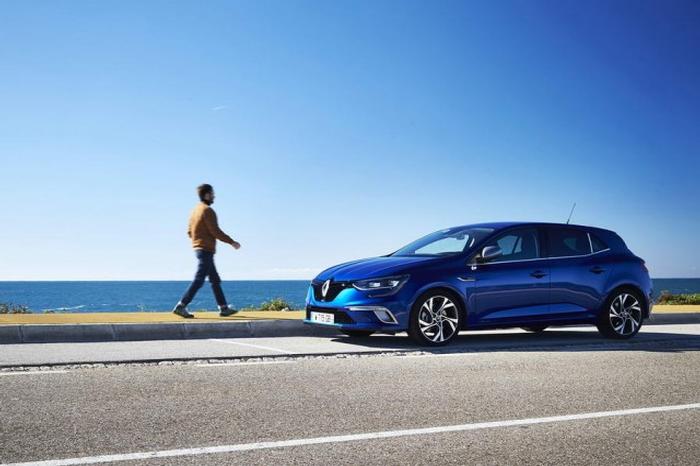2016 - 2022 Renault Megane Review

Buyer's guide to the Renault Megane Mk4: 2016-2022
Review
In the fight for sales in the compact hatchback segment, the Renault Megane has represented the French firm since the mid-1990s. It has gone through various incarnations in that time, starting as a relatively compact model in the shape of the Mk1, turning into the radical-looking Mk2 with its distinctive rear end, then returning with a more restrained shape for the Mk3. The Mk4 was an evolution of that model, and was introduced in 2016.
While past models have spawned coupes, convertibles and the Scenic MPV, the Mk4 was sold in three body styles – a five-door hatchback, Sport Tourer estate and four-door ‘Grand Coupe’ saloon, while the Renaultsport (RS) hot hatch returned as the range flagship.
Rivals for the Megane include the Volkswagen Golf, plus the closely related SEAT Leon and Skoda Octavia. Also on offer are the Kia Ceed and Hyundai i30 (both closely related), Peugeot 308, Ford Focus, Opel Astra, Honda Civic and Toyota Corolla.
What's it like?
The most common body style for the Renault Megane is the five-door hatchback, which makes up nearly half of the used versions for sale in Ireland. The remainder of cars available are split pretty much evenly between the Sport Tourer estate and Gran Coupe saloon.
Engine options have varied through the Megane's life, with 1.2 TCe 130 and 1.6 TCe 205 turbocharged petrol options, or 1.5 dCi 110 and 1.6 dCi 130 diesels. Later, a more powerful 1.6 dCi 165 diesel arrived, which was offered only in sporty GT trim (this was the sole spec for the 1.6 TCe 205 engine, too). In 2018, the range was simplified, with just the TCe 130 and dCi 110 engines, while the former engine was replaced by a more efficient 1.3 TCe 140 in the spring of that year.
A facelift in 2020 saw the introduction of the Megane E-Tech plug-in hybrid model, first as a Sport Tourer estate, then as a hatchback, but not as a saloon. This featured a 1.6-litre petrol engine backed up by an electric motor and had 160hp, while a modest 9.8kWh battery offered an official 50 kilometres of all-electric running. A choice of five or six-speed manuals and six or seven-speed EDC automatic gearboxes was available across the range, depending on engine, while all versions of the Megane were front-wheel drive. All RS models were five-door hatchbacks only.
Which model to go for?
The entry-level Megane in Expression+ trim is still equipped with equipment such as cruise control, Bluetooth and air conditioning, but we'd choose a Dynamique or Dynamique S model for the extra they offer, such as dual-zone climate control and auto lights and wipers. The latter is especially attractive, thanks to the portrait-style 8.7-inch touchscreen that offers plenty of functions. Signature models are plush, and feature leather trim as standard, while GT Line cars add a sporty edge, but use the same efficient petrol and diesel engines as the rest of the range. GT cars are a bridge between the standard range and the RS models, with more powerful but still relatively efficient engines. The plug-in hybrid is fine, although it will only make sense if you're able to charge the battery often to make the most of zero-emissions driving.
The hatchback offers decent space when compared with some rivals, but the Sport Tourer isn't the biggest estate in the class. The saloon comes with a limited number of engine options.
The Megane RS is slightly overshadowed by rivals such as the Civic Type R, Golf GTI and Ford Focus ST, but it's still an engaging and entertaining car that should be on any hot hatch buyer's shortlist, especially in Trophy guise, because it offers a good balance between performance and practicality.
Does anything go wrong?
French cars have a historic image of being unreliable, but this is largely unjustified these days. Every car maker tests their new models extensively before putting them on sale, and Renault is no different. In fact, with more electronic tech fitted to modern cars, there is even more reason to make sure they're thoroughly tried and tested before launch.
Renault is so confident in its cars that it now offers a five-year, unlimited-mileage warranty, which is the same amount of cover offered by Hyundai, a brand that is held in high regard for its reliability. If you're looking at a used Megane, then a later model (one registered from December 2019 onwards) will be worth seeking out for this warranty cover, which is transferrable between owners.
Perhaps one way to determine vehicle reliability is by looking at the number of recalls a car has had, and the Megane Mk4 has been recalled a total of 15 times, which is on the high side, but not unusual. These safety-related recalls are compulsory notices issued to rectify problems on affected cars, and on the Megane Mk4, there have been problems relating to catalytic converters not functioning properly, fuel line damage, electronic issues, incorrect airbag inflation, malfunctioning child locks on the rear doors, suspension faults and brake hydraulics. Renault will have a record of models that will need attention, so you should be able to check if the work has been carried out on any potential purchase you're looking at.



